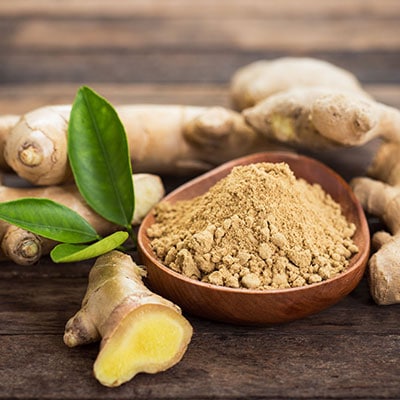 Ginger tea has been used for centuries in Asia to improve nausea symptoms.
Ginger tea has been used for centuries in Asia to improve nausea symptoms.
Background
- Ginger is a member of the Zingiberaceae botanical family which also includes turmeric, cardamom, and galangal.
- Though often called ginger root, ginger is actually a rhizome or stem that grows horizontally underground.
- It is native to southeast Asia and is used to flavor foods and beverages.
Nutrition
- Ground ginger is an excellent source of manganese.
- Manganese assists with wound healing, cartilage and bone formation, and carbohydrate, protein, and cholesterol metabolism.
How to Purchase, Prepare, and Store
- Purchase fresh ginger year round at grocery stores.
- Ginger can also be bought dried as a spice.
- Choose fresh ginger that is smooth and firm, and avoid those with wrinkly skin and blemishes.
- Store on the countertop if using within one week, or store in a bag in the crisper drawer for up to three weeks.
- Ginger can also be stored in an airtight bag in the freezer for up to three months.
- Prepare ginger just prior to use by scraping off the outer skin using the back of a spoon. You can also use a paring knife or vegetable peeler.
- Next, grate, mince, chop, slice, or cut into matchsticks.
- Create a tea by steeping a piece of the fresh root in boiling water.
- Use in marinades, baked goods, or your favorite side dishes or soups.
Nutrition Facts
1 Tablespoon ginger, raw
- Calories: 4.8
- Protein: 0.1 g
- Fat: 0.02 g
- Carbohydrate: 1.07 g
- Fiber: 0.12 g
- Calcium: 0.96 mg
- Iron: 0.04 mg
- Magnesium: 2.58 mg
- Phosphorus: 2.04 mg
- Folate: 0.66 µg
- Vitamin A: 0.0 µg
Source: fdc.nal.usda.gov
Recipes
Request an Appointment